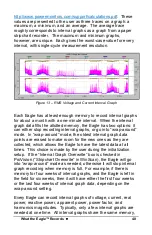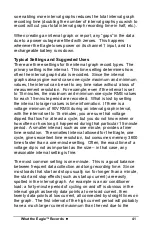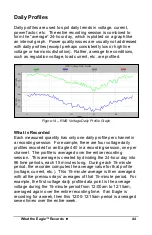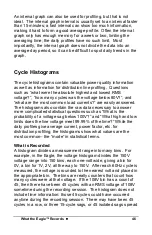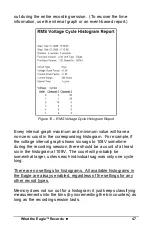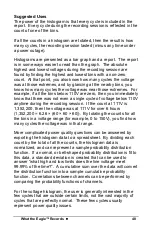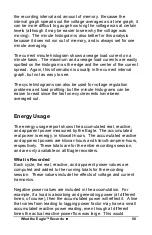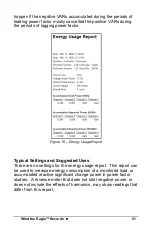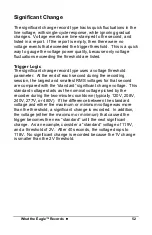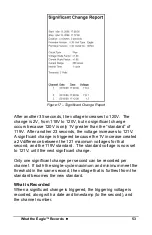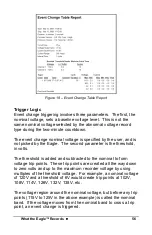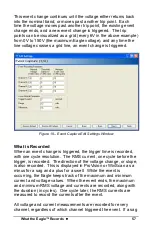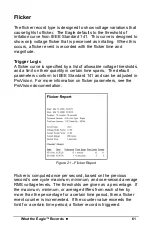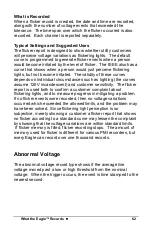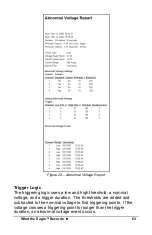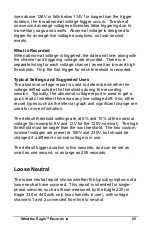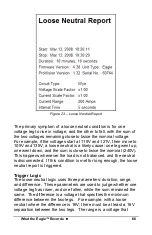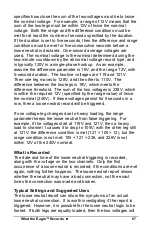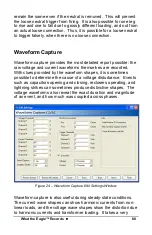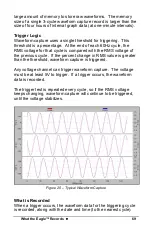
What the Eagle™ Records
••••
54
Significant change is recorded separately for each voltage
channel (although they share the same voltage threshold
parameter). If significant change memory is filled, significant
change recording stops. Both voltage channels use the same
significant change memory. Every Eagle recorder can record over
one thousand records.
Typical Settings and Suggested Uses
The default setting for the significant change threshold is 3V. This
setting can be as small as 1V or as large as 8V. Normally, a
threshold between 2V and 5V is appropriate, depending on the
nominal voltage. A single-cycle disturbance, such as a sag, will
trigger significant change if the sag is greater than the threshold.
If this happens, the sag voltage becomes the standard, which will
trigger another significant change if the voltage returns to its
previous level.
The significant change report is very useful for determining how
often, and to what degree the line voltage is fluctuating. If there
are no significant change records, then there were no fluctuations
greater than the threshold.
A significant change record can be correlated with the interval
graph by using its timestamp. Find the same time period in the
interval graph to see what the voltage and current were before
and after. This may give some indication of the cause of the
disturbance. All significant change records during an interval
graph interval will be included in a single interval graph data point,
consisting of a maximum, minimum, and average value. For
example, if the interval is one minute, and six significant changes
occur within one minute, they may all fall into the same interval
graph data point. (They are still reported individually in the
significant change report).
The significant change report provides more detail than the
interval graph for these disturbances.
A key advantage of the significant change report is that only one
disturbance per channel can be triggered each second. If multiple
disturbances occur during a second, the worst one is recorded.
This limits the size of the report, making it much easier to analyze,

